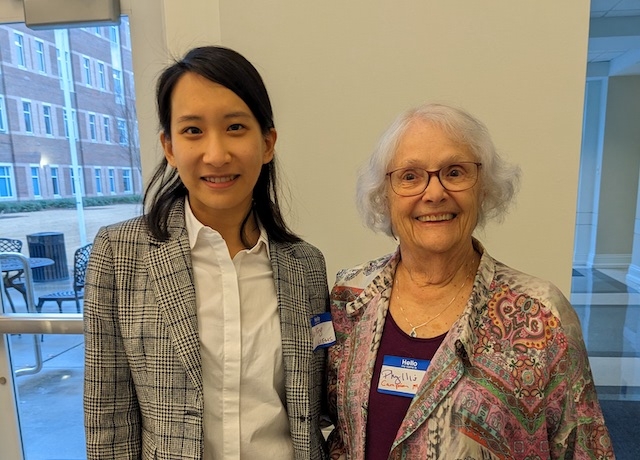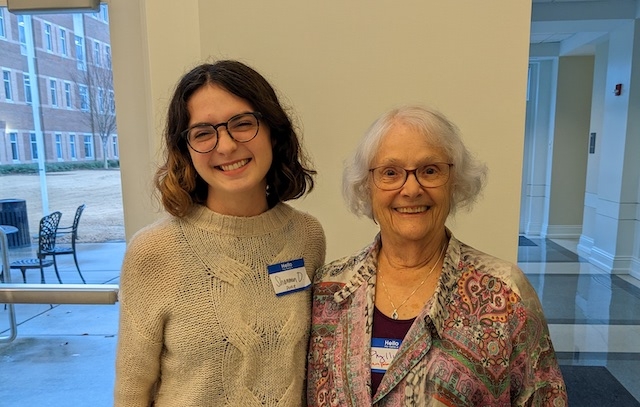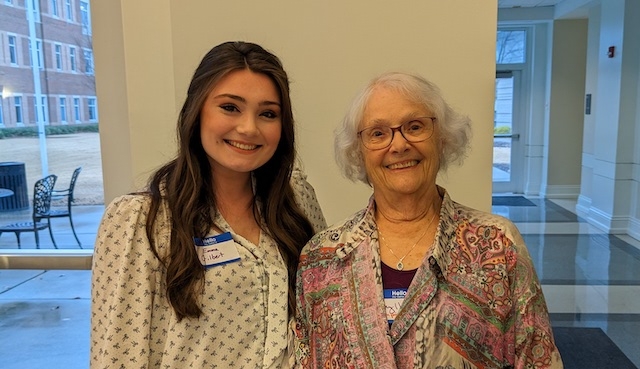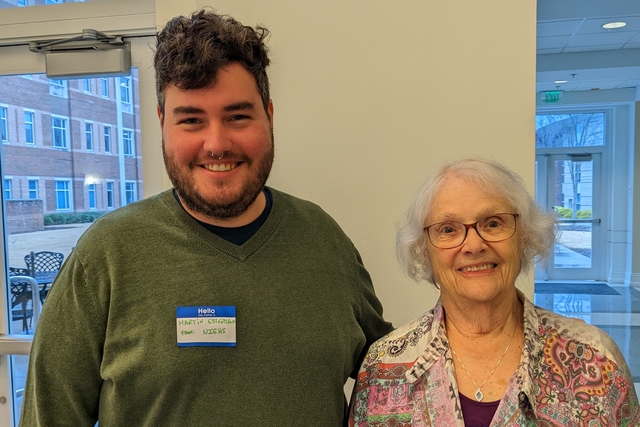At the recent meeting of the Triangle Consortium for Reproductive Biology held in Greenville, NC on February 25, 2023, The Campion Fund presented awards to four young scientists. The scientific presentations were judged and selected by senior scientists who are independent from the Campion Fund Board.

Yu-Ying Chen, PhD, a post -doctoral fellow in Humphrey Yao’s laboratory at NIEHS won the award for the best oral presentation, entitled: Identification of the origins of interstitial progenitors in the ovary. In order to fully understand ovarian function it is important to properly identify the embryonic origin of the cells of the ovary which are germ cells, supporting granulosa cells and interstitial cells. While the origin of germ cells is well known, a knowledge gap exists on how the interstitial cells are differentiated from the supporting granulosa cells during embryonic development. Using mouse XX gonadal cells at the onset of ovarian formation, Dr. Chen performed single cell nuclear RNA sequencing and discovered two distinct somatic cell types. One cell type is positive for nuclear receptor, Nr5a1 and the other cell type is positive for nuclear receptor Nr2f2. Both receptors are components of the Notch signaling pathway. Nr5a1 positive cells express components of Notch antagonist Numb. Nr2f2 positive cells express the receptor Notch3 and the transcription co-activator, Maml2. She performed tamoxifen-induced linage tracking by labeling early Notch active cells in fetal ovaries. Notch-active cells co-expressed NR2F2 at the beginning of labeling. These cells developed into theca and to non-steroidogenic interstitial cells but not granulosa cells in adult ovaries. She concluded that active Notch specifies interstitial cell linage and separates the from supporting cells at the beginning of embryonic ovary formation.

There was a three-way tie for the poster award and therefore, awards were given to three investigators who presented individual posters. The winners are presented in alphabetical order. Shannon Dupont’s poster was entitled, Regulation of mammalian sex determination by histone demethylases. At 11.5 embryonic day in the mouse the gonads initiate differentiation from genetic bivalence by a complex network of epigenetic regulation and expression of transcription factors required to maintain supporting cells. Shannon studied the epigenetic regulation of this transition, hypothesizing that HG3K27me is critical for sex determination and maintenance of gonadal differentiation. The genes associated with differentiation are bivalent and the cells at this point have active H3K4me3 and repressant H3K27me3 histone modification. After sex determination the bivalent gonad loses the H3K27me3. Shannon Dupont hypothesized that this is critical for sex determination. In her reported studies she showed that the modifying H3H27 demethylase genes in the mouse are kdmób and Utx (an x linked gene that escapes x inactivation in both mice and humans). Shannon demonstrated that mice deficient in kdmób showed partial male to female sex reversal. Mice deficient in Utx showed only delays in gonadal development. Utx has a Y linked homolog called Uty, a catalytically dead gene. She also stated that further studies to uncover the role of proteins regulating histone modifications during sex determination are important to the understanding of how chromatin regulation affects cell fate determination. Shannon conducted her studies in the laboratory of Blanche Capel at Duke University.

Emma Gilbert, a member of Chris Geyer’s laboratory at East Carolina University presented a poster entitled: Defining the essential role of the RNA binding protein, RBM46 in preparing male germ cells for meiosis. She described her studies on the evolutionarily conserved and germ cell specific RNA binding motif protein 46 (RBM46) which is the mammalian ortholog of Drosophila tumorous testes or tut. This gene is part of the gene expression program that occurs during the multiple stages of male germ cell development regulating this development at the post transcriptional level. RBM46 exists in a multiple protein complex and binds transcripts encoding key regulations of both differentiation and meiosis. She studied Rbm 46 Knock out mice. These mice have spermatogenesis blocked prior to meiosis. She looked at the temporal role of RBM46 during embryonic day 8.6, the essential time of spermatogonia differentiation. She showed that Rbm46 transcription levels steadily increased as spermatogonia proliferate and then differentiate. She then examined this with synchronized spermatogenesis in Rbm46 WT and KO mice. In the Rmb46 KO testes could initiate but not complete differentiation and apoptosis was dramatically increased. These findings resemble tut mutants in Drosophila. She concluded that RMB46 regulated transcription at this stage of spermatogonia differentiation and meiosis.

Martin Estermann from Humphrey Yao’s laboratory at NIEHS presented a poster entitled Nr2f2 regulates embryonic interstitial cell specification and Leydig cell differentiation. Leydig cells produce androgen and are the testicular somatic cells that control masculinization of male individuals. Leydig cell differentiation in the embryo is the first step in gonadal cell specification and is the separation of the supporting cells and interstitial cell lineages. Differentiation starts with the upregulation of nuclear steroidogenic factor 1 (Nr5a1). NR5A1 cells give rise to the interstitial Leydig cells. Interstitial cells marked by NR2F2 before sex differentiation become both Sertoli and Leydig cells. But after sex differentiation the nr2f2 cells become exclusively Leydig cells. Martin knocked out nr2f2 in gonadal cells after differentiation. Loss of nr2f2 resulted in reduced expression of Leydig cell marks (Insl3, Cyo17α1, H5d361, Lhcgr). He concluded that nr2f2 is necessary for Leydig cell differentiation.



